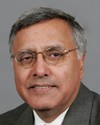Thank you.
My name is Brad Desmarais. I've been a police officer for over 30 years. I'm currently the inspector in charge of the gangs and drugs unit in the Vancouver Police Department.
I'm going to talk a little bit about the business of organized crime. I'm going to raise the bar a little bit in terms of the more sophisticated levels of organized crime that we're seeing. I'm going to build on the comments of Inspector Shinkaruk in terms of how organized crime deals with issues above street level.
Organized crimes, like most crimes, are commerce-oriented. Except for crimes of passion and a few other categories of offences, most people commit crimes to accrue a benefit. Organizations that commit crimes or have others commit crimes on their behest generally do so to satisfy a profit motive.
Like legitimate business, criminals in criminal organizations, whether they know it or not, conduct a risk-benefit analysis prior to committing an offence. They balance risk against profit. For the most part, this concept is consistent, whether an individual is casing a house to commit break and enter or whether it's the highly organized group considering a complex criminal enterprise. Generally, it's all about the money.
Arguably, the illicit drug trade is a major driving force behind the North American criminal economy. However, significant profit lines exist in other areas of criminal activity as well.
I've been a police officer for over 30 years. I have been investigating organized crime money laundering for the bulk of the last 15 years. During that time, there has been, in my view, a dramatic shift in how sophisticated organized crime groups do business. Like many successful legitimate businesses, those persons managing or advising organized crime groups have learned the value of diversification.
Diversification of criminal business lines is often the key to the longevity and profitability of a criminal organization. Their reliance on outside subject matter experts in the areas of law, accounting, financial planning, and the like also contributes to a healthy and robust criminal organization.
Criminals whose historic area of criminal expertise is drug trafficking are now exploring and engaging in other areas of criminal enterprise as a means of spreading risk and exploiting profitability. Fraud, extortion, counterfeiting, pimping, human trafficking, theft, and dozens of other offences comprise a plethora of opportunities to turn a criminal profit. Even a relatively crude fraud can reap massive rewards. In my experience, these crimes are often being run simultaneously with drug trafficking enterprises rather than being excluded.
The fallacy that drugs are the sole drivers of organized crime and, as some would have you believe, that the removal of drugs from the criminal economy would bring an end to organized crime and all that goes with it is naive in the extreme. Organized and individual criminal activity committed for profit will remain.
As I mentioned earlier, the primary motivator for committing most criminal offences is to create a benefit, pure and simple. The thugs and traffickers of today are not simply going to go away if one or another criminal business line is removed.
Similarly, violence will always be a fixture in the business of organized crime, regardless of crime type. The courts and other means of legitimately settling disputes are not typically available to criminals. Mediation does occur between groups, but when that fails, violence is often used to settle disputes, decrease liability, or eliminate competition. In most cases, the application of violence against competitors or persons who hold some liability to the organization is done discreetly and away from the public eye. Often the target of the violence simply disappears.
Violence is a way of life in much of the criminal world. There is no argument, however, that the most egregious violence is attributed to street and mid-level traffickers who are defending their drug lines from competition or takeovers. Crime is a source of untaxed, easy money, and not something that criminals will voluntarily walk away from.
In short, we need ways to address root causes and substantially improve the ability of the state to attack the profit motive through criminal asset removal.
The courts also need the ability to impose significant penalties resulting from provable offences against persons who provide services that enable criminal acts. In the Lower Mainland, we are reacting to what has accurately been described by our chief constable as a brutal gang war. We are directing a massive amount of resources toward dealing with this immediate threat to public safety. I think we're winning.
There's no question that the deployment of these resources is appropriate. It is what the public expects of us. Nothing less will do. What we can't be blind to, however, is the absolute certainty that organized crime and the human misery that accompanies it will remain long after the current regional gang violence abates. We need to look to the future and try to get ahead of the curve in countering criminal threats before they become egregious public safety issues.
We need to have better tools to undertake complex criminal investigations. Enhanced or new legislation in a variety of areas is an important part of the solution. No doubt you have heard of police frustrations in dealing with lawful access to information disclosure and the like. There are other areas of the law that should also undergo significant revision. The Canada Evidence Act, for instance, has not undergone a substantial major revision since 1923, despite changes in information technology, banking and business practices, international conventions, mutual legal assistance treaties, and so on. That is just one example; there are numerous other examples.
We were relieved to see that civil forfeiture legislation survived a constitutional challenge in the Supreme Court of Canada a few weeks ago. Quite frankly, utilizing the civil process to remove criminal assets has been a wild success, at least in British Columbia. Exploring other forms of civil law is something that should be considered as a means of disrupting organized crime.
We also need to work on improving the viability of proceeds of crime law. These are complex investigations that are typically onerous and lengthy to undertake, and they then take years to wind their way through the court.
Finally, the most important part of countering present and future threats from organized crime is to continue support of law enforcement by government at all levels, even when the current spate of violence is over. Sophisticated organized crime groups will continue to operate. The damage they wreak is not measured in body counts; it's far more subtle.
Thank you.



